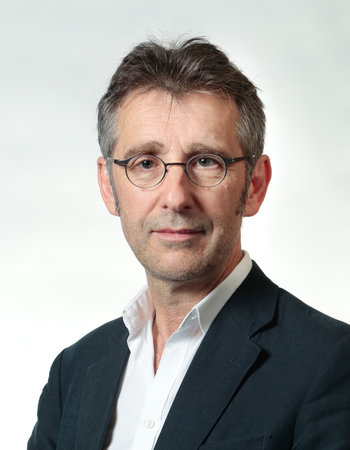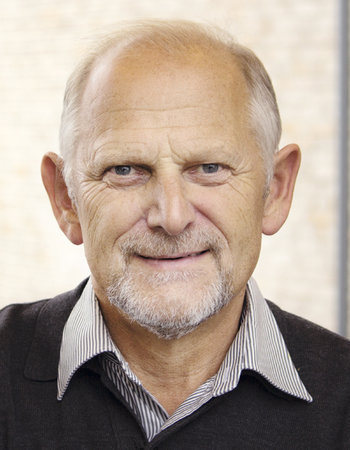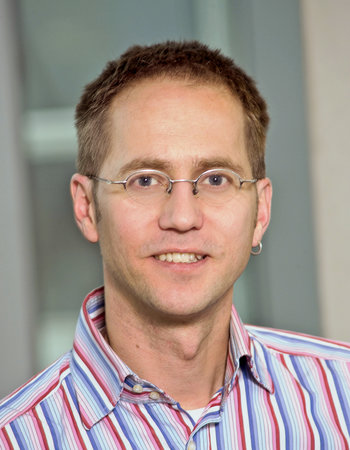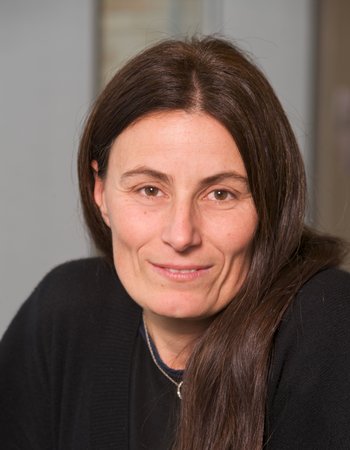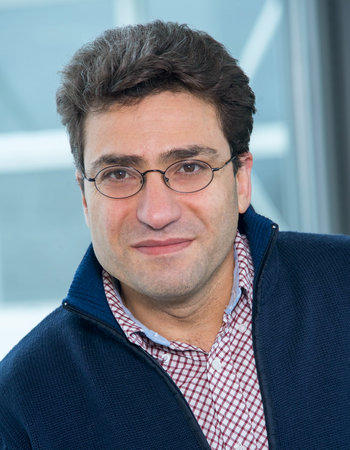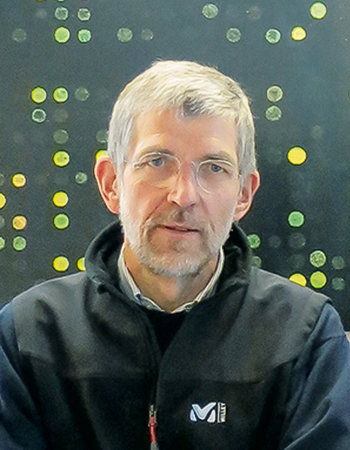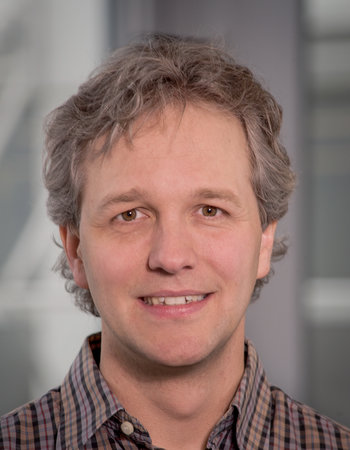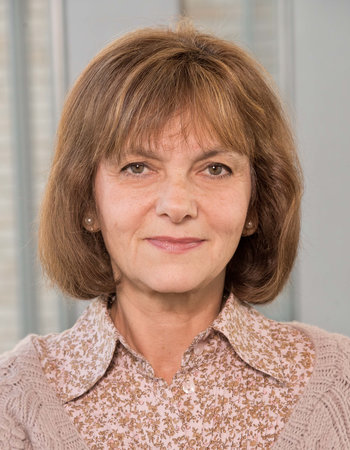Past Research Groups
This section provides an overview of the research groups and their respective scientific focus that left the Max Planck Institute of Immunobiology and Epigenetics (MPI-IE) since 2012.
In contrast to Max Planck Directors, academic positions for research group leaders are limited for a certain number of years, after which former Max Planck group leaders take new positions in academia all over the world. This regular turnover of faculty at the Institute is key to maintain our scientific success through fresh ideas and generate thematic diversity. At the same time, the MPI-IE is an excellent stepping stone for any academic career by providing support, career mentoring and a strong collaborative network.
The MPI-IE is proud of its alumni’s success, many of whom are now in leading academic positions at outstanding research institutions all over the world.
Former MPI-IE Research Group Leaders
The list below is a directory of former research group leaders at the MPI-IE in order of their departure.
Dr.
Angelika Rambold (2015-2024)
Current position: Institute of Medical Biochemistry (ZMBE), University of Münster
The Rambold lab focuses on untangling the identity and mechanisms driving orga-metabolic networks and how these shape immune cell functions during conditions of inflammation and infection on the single cell and populational level. Immune cell defects leave us open to attacks from bacteria, viruses and more. However, an overacting systems is, in many cases, as harmful and dangerous as one that stops working. By deciphering how organelle-networks instruct immune cell metabolism and function, our work is aimed at identifying novel avenues that may help us combat immune-related diseases. We follow an interdisciplinary research approach at the interface between immunology, cell biology and metabolism. We are combining cutting edge organelle and metabolic imaging approaches (advanced live and super-resolution imaging) and analysis with metabolomics and RNA-sequencing techniques (both at bulk and single organelle/cell level) on primary immune cells for the identification of orga-metabolic networks. Candidate pathways are tested in relevant animal models, human disease models and/or patient material.
Prof. Dr.
Tim Lämmermann (2015-2024)
Current affiliation: Full Professor & Director of the Institute of Medical Biochemistry, Center for Molecular Biology of Inflammation (ZMBE), University of Münster
University of Münster
The Lämmermann lab focuses on understanding how immune cells, particularly those of the innate immune response, coordinate fundamental biological processes such as directional sensing, cytoskeletal regulation, adhesion, migration, phagocytosis, survival, and communication to shape immune responses in complex tissue environments. The labs mission is to establish a conceptual framework for how immune cells integrate diverse signals from inflammatory environments and coordinate with other tissue-resident cells during inflammatory and infectious diseases. They also investigate the remarkable plasticity of immune cells, enabling them to adapt to rapidly changing conditions at both single-cell and population levels, with the ultimate goal of developing therapeutic strategies to modulate immune responses. Employing an interdisciplinary approach at the intersection of immunology, tissue physiology, and cell biology, the group uses intravital microscopy to visualize immune dynamics in tissues, complemented by advanced mouse genetics and innovative in vitro models that replicate physiological conditions to uncover the molecular mechanisms underlying these processes.
Prof. Dr.
Dominic Grün (2015-2021)
Current affiliation: Institute of Systems Immunology at the Julius-Maximilians-Universität of Würzburg
Systems Immunology Würzburg
Our lab investigates cell fate decisions crucial for developing multicellular organisms and maintaining organ tissues. With stochastic processes, we study how cells integrate signals from their microenvironment to make these decisions, both in normal conditions and in response to diseases or tissue damage. This approach involves exploring the dynamic differentiation of cells in systems like the hematopoietic niche and liver epithelial cells. Therefore, we use advanced single-cell experimental methods, such as single-cell RNA-seq and ATAC-seq, along with computational machine learning and mathematical modeling. These techniques allow us to profile individual cells, infer cell states and lineage trees, reconstruct spatial tissue architecture, and understand molecular interactions. Our goals include uncovering molecular mechanisms of cell differentiation and developing novel therapeutic approaches. The research focuses on areas like tissue development, turnover of organ tissues, and response to perturbations to elucidate the control mechanisms of cell fate decisions.
Dr.
Eirini Trompouki (2013-2021)
Current affiliation: Institute for Research on Cancer and Aging, Nice, France
IRCAN Institute, Nice
The lab investigates the mechanisms that govern hematopoietic stem cell formation during development, adult hematopoietic regeneration and blood diseases. We are mainly focused on the mechanistic intersection of these processes. In particular, we are currently interested in the interplay between repetitive/transposable elements and innate immune signaling mediated through RNA sensors and how these signals integrate into regulating hematopoiesis. We think that repetitive elements play fundamental roles in developmental and adult hematopoiesis both by signaling through their RNA transcripts and functioning as cis-regulatory elements. Hematopoietic stem cells are formed during development where they actively proliferate to create the adult hematopoietic stem cell pool. We are focusing on signals that regulate this process and we recently identified that repetitive elements expressed during development signal through RIG-I-like receptors to induce inflammatory signals that enhance hematopoietic stem cell formation. Repetitive elements are also induced in adult hematopoiesis, especially during stress situations like chemotherapy. Our goal is to further delineate the role of repetitive elements and inflammation in physiological and pathological hematopoiesis.
Dr.
Ritwick Sawarkar (2014-2021)
Current affiliation: University of Cambridge, UK
University of Cambridge
Cells respond to environmental stress and toxins by mounting an adaptive stress response in order to survive stressful conditions. Transcriptional control is a major regulatory layer that determines the strength, the duration and persistence of cellular stress response. Transcription factors, chromatin modifications and non-coding RNA influence the transcriptional response to environmental stress. The molecular mechanisms by which chromatin exerts control over stress response is the main focus of the Unit programme. We aim to address the following questions: (i) Which cellular pathways sense environmental stress/ toxins and signal to the genome? (ii) How does chromatin interpret the information about cellular health and toxic exposure determining the transcriptional response to stress? (iii) How does the transcriptional response adapt cellular phenotypes to survive the stress?
We study these three questions in the context of cellular exposure to environmental stress as well as small-molecule therapeutics in collaboration with pharmaceutical companies. Our approaches include genomics, single-cell transcriptomics, proteomics, chromatin biochemistry as well as genome-wide screening to identify novel components of stress-response pathways. Discovery-driven global approaches in mammalian cells are further validated by in vitro reconstitution experiments and mouse genetic models. We aim to gain novel insights and mechanistic understanding of transcriptional response to stress and toxins.
Dr.
Edward Pearce (2015-2020)
Current Affiliation: Bloomberg Distinguished Professor at the Johns Hopkins University, Baltimore, USA
Johns Hopkins University
The lab emphasizes two overlapping areas of research: Firstly, the lab is focused on the role of cellular metabolism in immune cell function and fate during infection and cancer. Therefore, it elucidates the mechanisms involved in immune cell metabolic reprogramming and the underlying reasons why different types of metabolism are essential to support different activation states in these cells. It is particulary interested in identifying ways to inhibit or promote metabolic pathways to manipulate immune responses. Secondly, the lab is interested in type 2 immunity responses induced by helminth parasites and asks how type 2 immunity is initiated and maintained, and examines mechanisms that mediate downstream sequelae of these types of immune responses, both beneficial, such as immunity to helminth parasites, and detrimental, such as tissue fibrosis and cancer progression. Moreover, the lab focuses on the biology of macrophages in type 2 immunity settings, especially from an immunometabolic perspective.
Dr.
J. Andrew Pospisilik (2010-2019)
Current affiliation: Director of the Center of Epigenetics and Professor at Van Andel Institute, USA
Pospisilik Laboratory
Epigenetic control of phenotypic variation and disease: Our lab aims to answer the question, “Who could I have been?”. We challenge dogmas in understanding the mechanisms underpinning disease and evolution. Current estimates place the prevalence of diabetes, neurodegeneration, cancer and obesity beyond 1 billion individuals worldwide. These represent the world’s chief economic and health care challenges of the day. While studies have established elegant genetic frameworks for our current understanding of these complex disorders the contribution of a number of critical regulatory layers, in particular developmental and epigenetic regulation, remains poorly understood. Our lab is interested in understanding epigenetic regulatory systems that contribute to phenotypic variation and thus to disease susceptibility. These paradigms include, among others, metabolic- and signaling-mediated changes to post-translational modifications of histones, non-coding RNAs, and modifiers of chromatin stability such as the Polycomb-Trithorax Groups. What is clear at present is that these epigenetic effectors play a critical role in defining set-points for entire functional gene sets; the fundamental outstanding question we are interested in is how these epigenetic cues influence the susceptibility and development of human disease.
Prof. Dr.
Michael Reth (1989-2017)
Current affiliation: Institute of Biology III, University Freiburg / BIOSS – external scientific member MPG
Laboratory Michael Reth
Research in the Department of Molecular Immunology seeks a better understanding of the organisation and regulation of receptors and intracellular signalling pathways in normal and diseased lymphocytes. Our research is largely focused on the development and function of B lymphocytes. We have proposed a new model for the structure and activation of the B cell antigen receptor (BCR) and have discovered new signalling components in activated B cells. We also developed techniques for a more profound study of signalling mechanism in resting and activated B cells. Several of our findings have contributed to a better understanding of human diseases such as leukemias and autoimmunity. Furthermore, we are among the first to adapt synthetic biology approaches for studying signalling in mammalian cells.
Dr.
Ana Izcue (2009-2015)
present affiliation: Institute of Molecular Medicine, Uniklinik RWTH Aachen, Aachen, Germany
AG Izcue
The immune system has evolved to fight pathogens while remaining tolerant to self and harmless antigens. The need for simultaneous immune vigilance and tolerance is particularly evident in the intestine, which is confronted to antigens coming not only from pathogens, but also from food and harmless commensals. Since the intestine is the largest barrier surface of the body with the outside world, it needs to be able to mount quick, efficient immune responses against potential pathogens. However, most of the intestinal antigens come from the food and the commensal flora, which need to be tolerated. Hence, the intestinal immune system combines a high number of inflammatory cells with a strong population of immune regulators that prevent detrimental reactions against harmless antigens. How the balance between inflammation and tolerance is achieved is still not well understood. The group focuses on the induction and maintenance of immune tolerance, especially through the generation and control of CD4+ Foxp3+ regulatory T cells (Treg). Treg are produced in the thymus or the periphery and prevent misdirected immune responses. They are key to avoid autoimmunity and inflammatory responses against the commensal microbiota. We want to dissect the factors that control the activity of antigen-specific Treg, and we are especially interested in the interactions of intestinal epithelial cells with the immune system.
Dr.
Patrick Heun (2005-2014)
Present affiliation: Wellcome Trust Centre for Cell Biology, Edinburgh, UK
Lab Patrick Heun
All inheritable chromosome conditions not encoded by the DNA sequence itself are called epigenetic, including gene expression and for most eukaryotes also centromere and telomere identity. The epigenetic transmission of these states through many cell generations is highly relevant for proper genome regulation and when perturbed can lead to genome instability and cellular malfunction. Centromeres are found at the primary constriction of chromosomes in mitosis where they remain connected before cell division. This structure is essential for an equivalent chromosomes segregation to the daughter cells. Using the fruit fly Drosophila melanogaster as a model organism my lab is particularly interested in the epigenetic regulation of centromere identity with a focus on neocentromere formation in flies and human tissue culture. We are further interested in the nuclear organization of centromeres.
Dr.
Simona Saccani (2005-2014)
Present affiliation: Institute for Research on Cancer and Aging, Nice, France
Laboratory Simona Saccani
Our research group studies the molecular mechanisms which regulate gene expression, using the NF-kB family of transcription factors as a model system. A major focus is to understand how the activities of transcription factors can be controlled in promoter-specific and cell type-specific fashion.
The NF-kB family of transcription factors is crucial for the expression of multiple genes involved in cell survival, proliferation, differentiation and inflammation. The NF-kB pathway is broadly active in multiple cell types, yet many NF-kB target genes show a tightly-regulated pattern of expression, with stimulus-dependent activation restricted to a particular biological setting. To investigate the molecular mechanisms underlying this, we focus on differences in the chromatin structure of target promoters and enhancers, and on co-factors which can regulate the recruitment and activity of NF-kB in specific cell-types.
Prof. Dr.
Hassan Jumaa (2001-2013)
present affiliation: Instiute of Immunology, University Medical Center Ulm, Germany
Laboratory Hassan Jumaa
The aim of our research group is to obtain a global understanding of the signalling pathways that regulate the proliferation and differentiation of B cells. B cells play a key role in adaptive immune response and enable the body to attack pathogens highly efficient and persistent. They bind pathogenic substances at the B cell antigen receptor (BCR). Signals emanating from the BCR or its precursor (pre-BCR) lead to changes in gene expression and determine the fate of developing B cells. Defects in the signal transduction of B cells result in immunodeficiency, autoimmunity or leukaemia. Studying signal transduction in B cell development allows multiple interactions and interdisciplinary collaborations with research groups in both basic science and in the clinic.
Dr.
Taro Fukao (2008-2013)
Present affiliation: Tokyo, Japan
The aim of our research group is to understand the biology of functional RNAs in the hematopoietic-immune system. We are focusing on the role of microRNAs in the mammalian hematopoietic-immune system. MicroRNAs are a class of non-coding RNAs binding to the complementary mRNAs and regulate their expression. They are found in animals, plants and viruses with their sequences conserved even among relatively distant species. Various reports have shown the involvement of microRNAs in a broad range of physiological events such as development, differentiation, proliferation, morphogenesis, apoptosis and metabolism. Studying the biology of microRNA in the immune system may directly contribute to understanding the molecular mechanism of immune system integrity. Furthermore, the knowledge of microRNA in immunology would provide clues to elucidate the molecular pathogenesis of infection and immune diseases such as autoimmune and inflammatory diseases.
Dr.
Marinus Lamers (1984-2013)
retired
Classically the main function of the immune system was seen in the defence to pathogenic microorganisms. Now, it is presumed that the immune system is in a constant dialogue with the environment, i.e. with the microbial world and its products at the boundary layer between –defending – organism and outside world. This dialogue is necessary to maintain an ecosystem that allows survival of beneficial microorganisms, but the disposal of deleterious ones. The difference between beneficial and deleterious is most likely not absolute, but rather sliding, and therefore, the recognition strategies of the host is not tailored on pathogens only. Although the immune system most likely evolved at the demarcation line between in and out, immune processes at this line are still a poorly studied part of the immune system. For understanding the immune system, it may actually be the most important one.
Prof. Dr.
Robert Schneider (2004-2012)
Present affiliation: Institute for Functional Epigenetics, Helmholtz Center Munich
Laboratory Robert Schneider
One of the major goals of post-genomic biology is to understand the molecular basis and physiological role of covalent protein modifications. We are using histones and the "histone code" as models to study multi-site protein modifications. Our aim is to identify new modifications, to decipher how these modifications are epigenetically inherited and how they can regulate gene expression and chromatin structure. The best studied examples for multi-site protein modifications are currently histone proteins. The complexity and diversity of histone (and other chromatin-associated) modifications add largely to the capacity of the genome to store and process information. We are currently only beginning to understand the many implications of this epigenetic information for biology and disease. Whilst it is still under discussion if histone modifications form a true "code", it has now been established that changes of histone modifications and of protein complexes binding to specific modifications are involved in the regulation of most - if not all - genes in eukaryotic cells. Therefore the significance of studying chromatin modifications extends far beyond the field of chromatin research, because changes in the modification pattern are likely to affect all biological processes.
Prof. Dr.
Tilmann Borggrefe (2005-2012)
Present affiliation: Justus Liebig Universtity Giessen, Germany
Laboratory Tilmann Borggrefe
Transcriptional regulation of blood cell development. The decision to initiate transcription of a gene is the key control point regulatingits expression during development and in response to physiological and environmental stimuli. Understanding the mechanisms of gene expressionhas important implications in understanding development, cellular transformation and many other cellular processes. The focus of my laboratory is to study transcriptional regulation of blood cell development (hematopoiesis) in the mouse. In particular, we want to gain further insights in the physiological significance and function of coactivator and corepressor complexes.
em. Prof. Dr.
Marina Freudenberg (1981-2012)
retired
The major interests of the laboratory are the elucidation of the mechanisms underlying the biological activity of bacterial endotoxin (LPS) and other bacterial components, the role of these components in the microbial recognition by the innate immune system and the conditions under which the activity of such components can be altered. Of particular interest is the infection induced LPS hypersensitivity and its role in the innate immune response and defense against intruding pathogens.
Sensitivity to LPS is determined by a locus on mouse chromosome 4, designated the lps gene. Mutations of this gene result in unresponsiveness to the lethal and other biological effects of LPS. The identification of the lps gene and its product, with participation of our group, end of 1998, as toll-like receptor 4 (TLR4) brought the breakthrough into a new era for the field of endotoxin research and of microbial products generally. Since the discovery of TLR4, ten different TLR's acting as signaling receptors for microbial components have been identified. This enabled further the study of signaling pathways involved in the activation of cells of the innate immune system.
Prof. Dr.
Wolfgang Schamel (2002-2012)
Present affiliation: Biologie III, Faculty of Biology, University of Freiburg
Laboratory Wolfgang Schamel
Our interest are the molecular mechanisms of the activation of T lymphocytes by pathogens. We develop new biochemical techniques for the identification and analysis of multi-protein complexes on a large scale (quantitative proteomics, systems biology). The methods are used to define the protein complexes that change in time and space within the signaling cascades of the antigen TCR. We have determined the TCR stoichiometry, by showing that complexes of different sizes co-exist on the cell membrane. Interestingly, they play different roles in T cell activation. We have detected a conformational change at the TCR induced by ligand-binding that is – together with TCR clustering – required for T cell activation. Our new „permissive geometry model“ of TCR triggering unifies so far irreconcilable findings as crystallographic data of the TCR subunits, studies on the geometry of the ligand (MHC peptide), the presence of multimeric TCR on the cell surface and the role of self-peptide MHC in T cell activation. Blocking the effectors of the conformational change, allowed us to inhibit T cell activation. Thus, auto-immune diseases could be treated by this mechanism. Lastly, we work on the human CD3gamma-deficiency. We have developed a humanized CD3gamma-deficient mouse strain, that shows the same defects as the human patients, and is now used to study this disease in detail.





